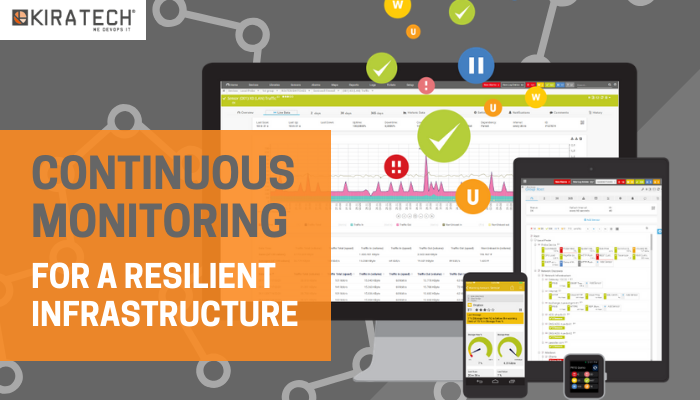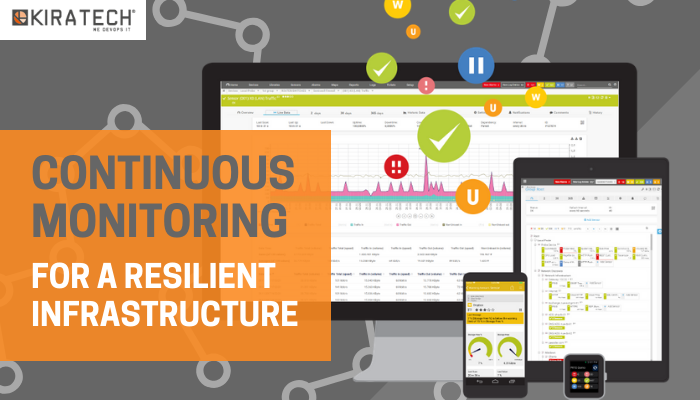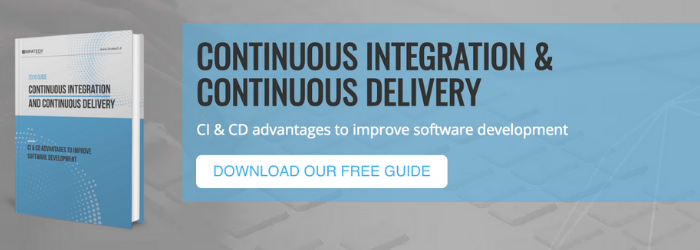
It’s not easy to manage all the company’s information and data, but it is extremely important to analyse and monitor them in order to be able to act immediately in case of errors but also to be constantly aware of the company’s dynamics. Let’s see which is the best way to face this need.
What is Continuous Monitoring?
The last few years saw a change in perspective on systems and applications monitoring. The management used to make periodic tests to analyse risks and to act on the company’s processes, but with some limits:
- Checks were made fairly distant in time causing less continuity in the processes optimization;
- Solutions efficiency can be reduced to solve other problems generated by organization changes and difficult to predict;
- Follow up and information collection activities needed to check that all the implemented modifications have solved the issues;
- Long reactions to accidents;
- Impossibility to find bottlenecks immediately;
- Impossibility to find marginal but crucial problems (concerning security, for instance).
The most innovative companies that wanted to face all the problems listed above, decided to implement some Continuous Monitoring Tools. These tools are becoming increasingly important to keep the server, services and company’ programs situation under control.
Continuous Monitoring practices helps to automate devices and services checks, but also to notify the malfunctions to the IT sector, allowing admins to be more efficient.
Thanks to the Continuous Monitoring model (also called CM) the management has the opportunity to make continuous checks on the company processes and activities, using specific software. It is possible also to make sure that all the policies and company procedures are respected and that the chosen processes are as efficient as expected.
In contrast to the traditional model, thanks to Continuous Monitoring:
- The monitoring activities focuses on specific indicators;
- Controls and transactions can be continuously verified in real-time;
- Also the controls’ failure can be immediately found, reducing the consequent risks;
- It is possible to align the business needs with the actions, adapting them to the new goals and focusing only on the most important checks.
Which are the advantages?
There are lots of benefits taken by CM, let’s look at some of them:
- The management can check the efficiency of the control system;
- Inefficiencies can be easily and quickly found, ensuring their fast correction;
- It is possible to increase the audit activity and the controls monitoring efficiency;
- Risks reduction;
- Auditing and monitoring activities are shorter and more efficient;
- The available information systems are better used;
- Auditor’s and management’s competencies increase.
Icinga: the best Continuous Monitoring Tool
To implement Continuous Monitoring in your company, we suggest you use Icinga for its unique characteristics. This is a strong and flexible monitoring software that keeps all the devices inside the network under control, automates the devices and services checks, notifies failures to the IT sector.
It is composed by Icinga Core (the monitoring software), a web portal (to gain the tool access through the browser) and some API that manage and automate the whole tool, making it the most DevOps friendly.
In addition to the above advantages, Icinga helps to achieve these Network Monitoring objectives:
- More admin efficiency, identifying problems immediately;
- Decrease in failures reactions;
- The possibility to easily identify bottlenecks and problems considered marginal before, but fundamental in reality, especially security speaking.
The Continuous Monitoring aspect can be included in the bigger DevOps methodology field; if you want to learn more about DevOps, Continuous Integration and Delivery, we suggest you download our free guide:








